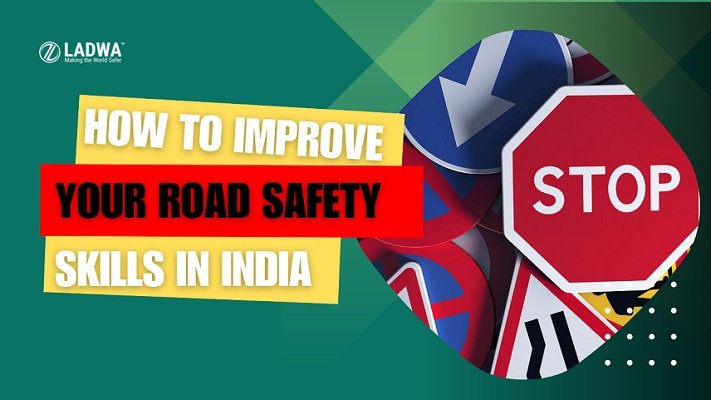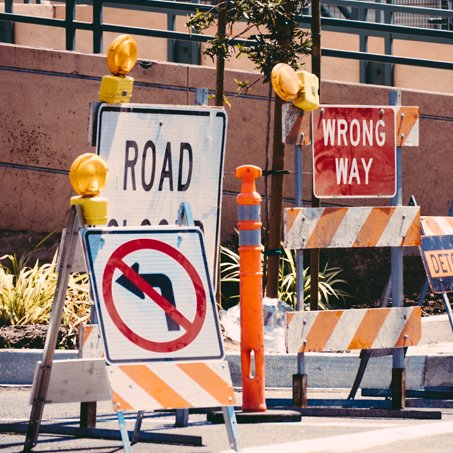Road safety is of the utmost significance in India, where a high rate of accidents and fatalities occur due to poor road infrastructure, irresponsible driving, and a lack of knowledge. To reduce these problems, proper road safety solutions are essential. To address this issue, Ladwa Road Safety Products established modern technology that improves road traffic safety. Their offerings include reflective road studs, traffic cones, speed breakers, and safety barriers, all intended to increase visibility, reduce vehicle speed, and foster safer driving conditions. Ladwa greatly contributes to lowering accidents and encouraging safe driving practices in India with these services.
Develop Essential Road Safety Skills
All users, whether pedestrians, cyclists, motorcyclists, or vehicles, must be proficient in road safety. These abilities cover a variety of actions and attitudes that support safer driving conditions and accident reduction. Here are some essential road safety skills mentioned below:-
Understanding Traffic Rules And Regulations
Traffic laws and regulations are crucial to ensure the security and orderly movement of automobiles and people on the roadways. These rules specify important factors, including speed limits, who has the right of way, traffic lights, and parking restrictions. Following these guidelines helps to maintain order, reduces the number of accidents, and improves traffic flow. To establish a safe and peaceful driving environment for all, all road users must comprehend and abide by these rules. According to the Minister of Transport and Highways, there are 415 deaths and numerous injuries due to traffic accidents per day throughout India.
Defensive Driving Skill
Defensive driving is an essential ability beyond simply adhering to the regulations of the road. Preventing accidents entails being aware of potential dangers in advance, remaining vigilant, and taking decisive action. Defensive drivers keep a safe following distance, abstain from distractions, and pay attention to their surroundings. This strategy equips drivers to respond skillfully to unforeseen circumstances, like sudden stops or irresponsible driving by others. Defensive driving drastically lowers accidents and encourages safe driving practices by emphasising caution and safety.
Pedestrian Safety
An essential ability that allows people to cross streets safely is pedestrian safety. It is crucial to comprehend traffic signals, cross at authorised crosswalks, and keep your eyes on the road. Internalising these behaviours helps pedestrians become less vulnerable to accidents and improves their capacity to coexist peacefully with traffic. By encouraging cooperation between walkers and drivers, this skill not only protects pedestrians’ well-being but also fosters a safer road environment.
Proper Vehicle Maintenance
Maintaining vehicles properly is essential for ensuring road safety. The durability and performance of a vehicle are improved by routine maintenance of the brakes, tires, lights, and other essential components. All drivers benefit from safer road conditions since well-maintained vehicles are less likely to encounter breakdowns or malfunctions that could cause accidents.
Driver’s Education And Training
The improvement of driver education and training is essential for increasing road traffic safety. Drivers learn the required skills, traffic laws, and defensive driving techniques through intensive training programs. They can utilise this knowledge to make informed decisions, identify potential risks, and effectively handle a variety of roadside circumstances. Over 77% of the drivers who had attended a driver’s education course lowers the likelihood of accidents and encourages careful driving habits, well-trained drivers help to create a safer driving environment.
Emphasising The Role Of Technology
By integrating innovative safety measures, the technology significantly contributes to preventing traffic accidents. Anti-lock brakes, collision avoidance systems, lane departure warnings, and adaptive cruise control are some technology developments that enhance driver awareness and control. By assisting in detecting potential hazards, maintaining safe distances, and delivering quick alerts, these advances help decrease the possibility of accidents.
Avoiding Distractions While Driving
Distracted driving is quite dangerous since it diverts the driver’s attention from the road. Texting, talking on the phone, and switching between infotainment systems can all result in accidents. Driving should come first, phones must be put away, and hands-free devices should be used when needed to avoid this. Everyone on the road may drive more safely by maintaining mental focus and avoiding distractions.
Avoiding Drunk Driving
Strict legal penalties for drunk driving are intended to deter this risky behaviour. Those caught driving while intoxicated may be subject to fines, licence suspension, mandated alcohol education programs, and even imprisonment in certain areas. Repeat offenders face more severe punishments, and convictions can result in a lifelong criminal record, harming one’s reputation and employment prospects. Such stringent regulations highlight the significance of abstaining from drunk driving. Underage drivers are prohibited from operating a vehicle with any detectable level of alcohol in their systems under zero tolerance legislation. All 50 states and the District of Columbia have these regulations in effect, as well as legislation that keeps the legal drinking age at 21. Millions of lives have been saved due to this. The upkeep of these laws is essential.
Conclusion
Road safety knowledge, including awareness of traffic laws, defensive driving, pedestrian safety, and appropriate vehicle maintenance, is crucial for all road users. Technology is essential for preventing accidents. Maintaining calm during an accident, looking for injuries, and reporting the incident are crucial. Through its innovative approaches that improve visibility, regulate speed, and encourage responsible driving, Ladwa has demonstrated its dedication to road safety in India. This has led to a decrease in accidents and promoted safer road environments.








